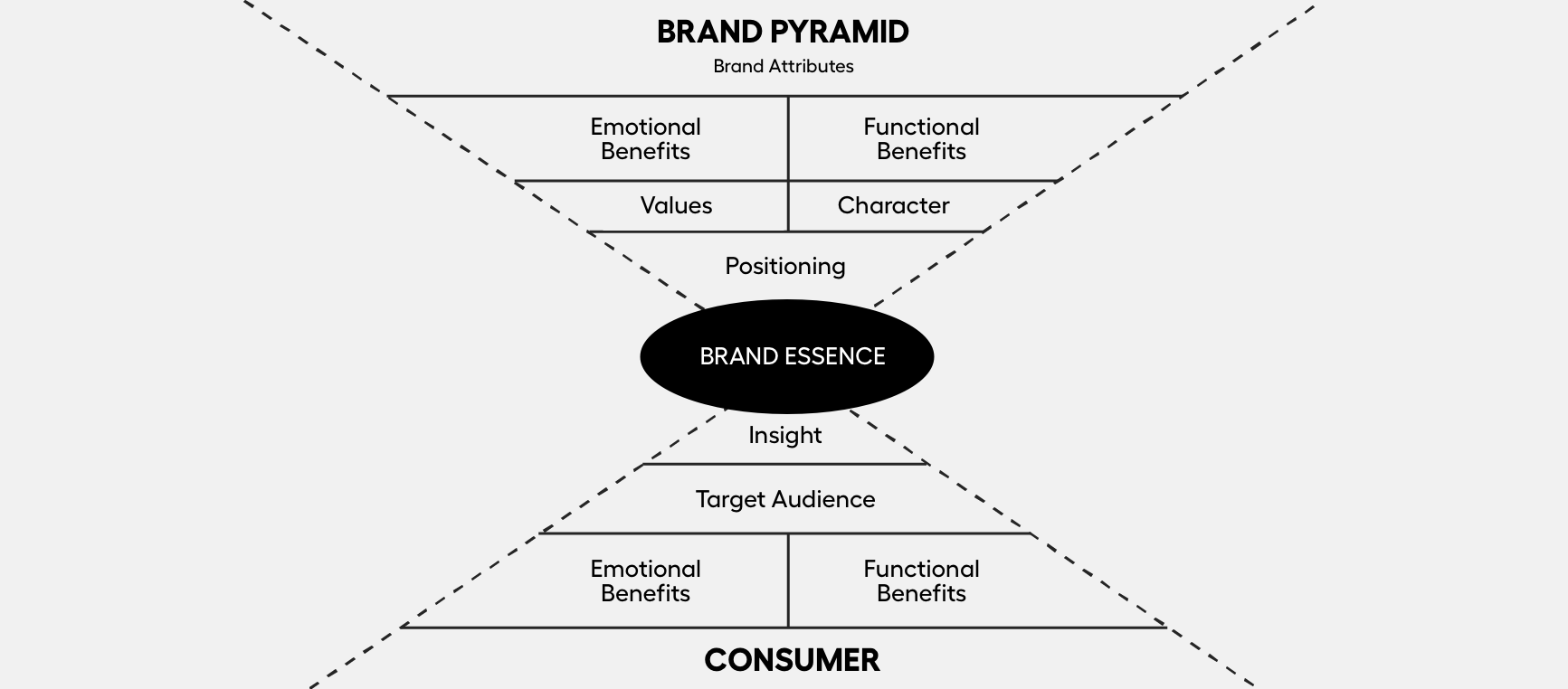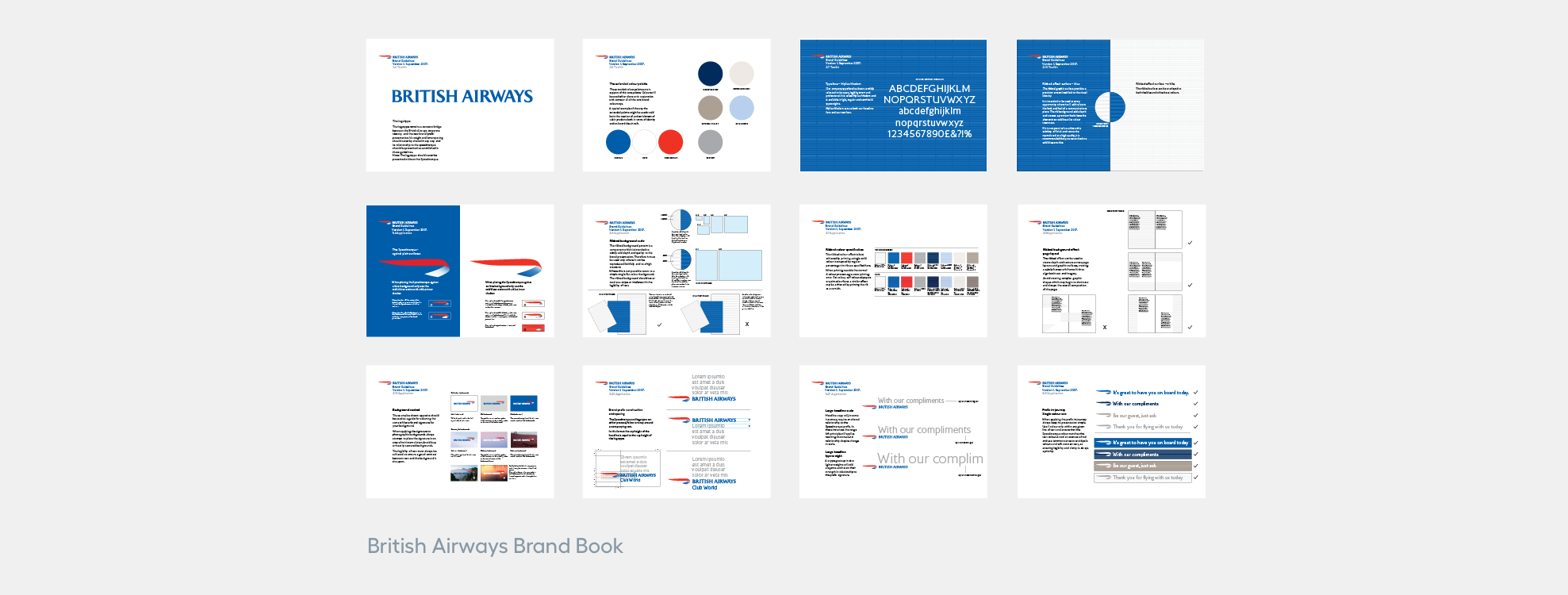The Art of Branding: The Complete Guide

- Why do some companies make millions, with customers loving everything they produce, while others remain on the sidelines?
It all comes down to branding.
A brand is the image in a customer's mind that creates additional value, which they are willing to pay more for.
This "image in the mind" is a set of perceptions held by the target audience about a product/service and the company. This image can include a logo, brand colors, UX/UI, customer interactions, fonts, loyalty programs, etc.
Put simply, a brand is the associations people have when they hear your company’s name (or personal name, in the case of personal branding).
Creating a brand in a week or two is impossible. Branding is a long process of building relationships with the audience and forming these very associations. It requires time, effort, funds, and knowledge.
In this guide, we’ll share our experience and outline the starting points, stages, and benefits of brand creation.
Why and How to Start Building a Brand
To start building a brand, you need to understand why it’s necessary. While most business owners and customers intuitively grasp this, few can explain the true value of this marketing tool.
Branding Goals:
- Increase recognition of the company or product
- Differentiate from direct competitors
- Build loyalty and expand the base of repeat customers
- Justify a price increase (positive associations, confidence in superior product/service quality, and other image advantages)
While a brand is intangible, it significantly influences a buyer's decision. We tend to trust and favor companies that:
- We see advertised frequently
- Evoke positive associations
- Reflect values we understand and relate to
A brand is more than just a trademark or corporate identity, with which it’s often confused.
The Branding Process
The technology for creating a brand does not depend on the company's field. The stages are largely universal across industries, differing only in details, especially in highly competitive areas.
Stages a Company Goes Through to Become a Brand:
- Market Analysis and Briefing
- Positioning Development
- Brand Platform Development
- Naming
- Corporate Identity Creation
- Communication Strategy Development
- Brand Book and Guideline Creation
Let's go through each in more detail.

Project Stages
Market Analysis and Briefing
At the start of a project, a brief is created. This is a technical assignment for the marketing team, aimed at analyzing the current market situation, trends, and customer perceptions of the brand (if it already exists).
This stage involves data collection using:
- Surveys of the target audience
- In-depth interviews with company employees to understand their view of the product and the future of the company
- Focus group tests (for example, friends, family, neighbors, or specifically selected individuals with relevant attributes)
Suppose you’re selling beds. By interviewing representatives of your target audience, you’ll discover:
- Key considerations (size, price)
- Concerns (breakage, overpaying)
- Purchase drivers (promotions, design)
- Missing features (cup holder, assembly options)
- Additional product requests (pillows included)
The collected data needs to be systematized and structured to aid in creating preliminary brand concepts.
Positioning Development
Positioning combines important questions: your market role, target audience, competitors, price segment, and strengths.
For our clients, we develop positioning using the formula:
What (product) + Unique Aspect + Unlike Whom + Price (optional)
Examples of Positioning:
- Swatch: Affordable and stylish watches
- Sheba: Cat food chosen by owners who love to pamper their pets
- Vichy: High-quality skincare products, sold exclusively in pharmacies
Brand Platform Development
A brand platform is a document describing the brand's unique attributes (USP, emotional and rational benefits, target audience, etc.) and all visual, image, and marketing attributes.
The platform acts as a guide for the team and a filter for decision-making. Every strategic decision should align with this document, ensuring that you know what to say and do—and what to avoid—to maintain current and attract new brand followers.
For the brand platform, we use a dual-pyramid model featuring two key images: the consumer and the brand. These images form the basis for interaction.

Naming
The company's name, along with its logo, is one of the main triggers for brand recall. It should be concise and memorable.
The name reflects your market position, customer perception, differentiation from competitors, and communication style with customers. That’s why name creation is costly and takes 2-3 weeks.
In addition to the name, a slogan and descriptor are also developed.
- Slogan: A short phrase that expresses and extends the essence of the brand, e.g., Toyota’s “Drive Your Dream”—an abstract, inspiring phrase.
- Descriptor: This narrows the meaning, describing the brand's activity, e.g., "jewelry house" or "bakery chain."
Corporate Identity Development
Brand creation is incomplete without corporate identity. Like a person's appearance, every brand has an image formed by its logo, brand colors, photo or illustration style, merchandise, etc. This identity shapes the first impression of a company before customers even interact with the product.
We start with design research:
- Studying the current market
- Assessing competitor solutions
- Analyzing local and international trends in the field and related areas
Using design research, you’ll establish visual tactics, colors, fonts, and other elements for brand identity creation.
Next, a visual positioning map is developed to help identify what sets the company apart from competitors and how the brand’s personality will manifest.
At the core of a strong identity are powerful visual ideas and original solutions. They ensure the corporate style’s longevity, attractiveness, and interactivity.
Communication Strategy
Developing a brand involves creating a broad communication idea and selecting key channels to reach the audience (online and offline). Standards and methodologies are established, along with sales funnels and content plans, which guide company-client communications.
Today, you can interact with almost any brand on social media. Customers can easily get answers to questions without leaving Instagram or Facebook—a practice embraced even by the largest companies.
To build a brand, you need to know what to say and how.
In a communication strategy, we:
- Formulate the overall big idea for communication and advertising campaigns
- Create a pool of communication messages for main audience segments
- Develop key visual ideas for ad campaigns as primary recognizable anchors for communication
- Select communication channels and tactics
- Conduct activations for core audience segments
Guideline and Brand Book
A brand book is akin to a constitution for a country or a code for an army. It enforces brand rules, detailing how the company looks, communicates with clients, its mission, and differentiators.
This document consolidates all brand platform information, including attributes (essence, values, tone of voice, etc.), positioning, and corporate identity.
A guidebook (guideline) is created to address typical design questions. It provides rules and tips for using the brand's visual attributes and can be either a separate document or part of the brand book.

Brand Development Strategy
Once a brand is ready for launch, the next step is to develop a strategy for its growth. We recommend planning actions for 6, 9, and 12 months.
Key considerations include:
- Product line and potential scaling
- Business plan
- Promotion budget
After this, you can begin promoting the brand using various marketing tools, from PR events to email marketing, from contextual advertising to loyalty programs for regular customers.
The launch will reveal whether your concept is successful and whether you can build long-term relationships with the target audience. The main determinant of success is product quality. If the product or service doesn’t match your promises and customer expectations, no branding can guarantee sales.
Brand creation strategy doesn’t end with the initial launch. As mentioned, branding is a long-term project, requiring ongoing engagement and adjustments.
Regular audits help identify when brand attributes need updating—such as the corporate style or slogan—and signal actions if consumer demand drops or the product range changes. In some cases, rebranding—a radical transformation of the company’s image—may be necessary.
Why Branding Matters
A brand distinguishes serious market players from shortsighted entrepreneurs. A well-crafted brand image inspires trust, encourages repeat business, and generates word-of-mouth referrals. It amplifies your differences from competitors and lets you set product prices independently of market conditions.
To summarize the steps for creating a brand:
- Analyze the product, market, competitors, and customers
- Develop positioning that meets business and audience needs
- Create a brand platform with memorable attributes
- Develop a concise and memorable brand name
- Build a corporate identity that differentiates you from competitors
- Create a communication strategy to know what, how, and where to say to your audience
- Compile a brand book and guideline to ensure consistency
If you want to entrust this to professionals who have created over 100 major and local brands, email us at ulpantelaviv@gmail.com.


